Medieval Northern French Carved Oak Figure of the Christian Martyr Saint Maurice
A Late Medieval Northern French Carved Oak Figure of the Christian Martyr Saint Maurice Depicted Wearing Armour and the Attire of the legendary Roman Theban Legion
Size: 123.5cm high, 45cm wide, 20cm deep - 48¼ ins high, 17¾ ins wide, 7¾ ins deep
Size: 123.5cm high, 45cm wide, 20cm deep - 48¼ ins high, 17¾ ins wide, 7¾ ins deep
A Late Medieval Northern French Carved Oak Figure of the Christian Martyr Saint Maurice Depicted Wearing Armour and the Attire of the legendary Roman Theban Legion
Size: 123.5cm high, 45cm wide, 20cm deep - 48¼ ins high, 17¾ ins wide, 7¾ ins deep
Size: 123.5cm high, 45cm wide, 20cm deep - 48¼ ins high, 17¾ ins wide, 7¾ ins deep
An Egyptian, Maurice was born in Thebes in the 3rd century AD and rose through the ranks of the Roman army as an acknowledged Christian to become commander of the Theban Legion. He was in charge of over one thousand men all of whom were Christians. The Legion was dispatched to Gaul to assist Emperor Maximian in putting down a revolt and then ordered to clear the Great St Bernard Pass across Mont Blanc. Before going into battle they were instructed to offer sacrifices to the ancient Roman gods and pay homage to the Emperor. Maurice pledged his men’s military allegiance to Rome, but stated that their faith was in the one true God and service to Him super-ceded all else. He declared that to wantonly kill innocent Christians who were not enemies of the Emperor was inconceivable to his soldiers and so refused the direct order to harass local Christian believers. Maximian then had every tenth Theban soldier killed, a military punishment know as ‘decimation’. More orders were given and again, encouraged by Maurice, they refused and a second decimation followed. When a final refusal to attack fellow Christians was received, Maximian ordered all the remaining members of the legion to be executed. The place of their martyrdom in 287 AD was known as Agaunum and is now a site of pilgrimage, the Abbey of St Maurice-en-Valais in Switzerland.
St Maurice became a patron saint of the German Holy Roman Emperors and in 926 AD Henry the Fowler (919 - 936 AD) ceded the present Swiss canton of Aargau to the Abbey in return for the Holy Relics of Maurice’s lance, sword and spurs. These relics became important insignia of the Imperial throne and were part of the regalia used at the coronations of the Austro-Hungarian Emperors right up until 1916. Maurice is also connected to the legend of the Holy Lance of Vienna, said to have been the spear that pierced Christ’s side when on the cross.
In Switzerland the town of St Moritz is named after him and over 650 religious foundations in Europe are dedicated to him. He is the patron saint of the Duchy of Savoy, of the Swiss Valais and is revered in Piedmont and Sardinia. He is the patron saint of sword-smiths and soldiers, especially the Papal Swiss Guards, and weavers and dyers, especially the Gobelins tapestry manufacture. In art, as can be seen in an oil on wood by Lucas Cranach the Elder, he is usually represented as Negro foot soldier. Although he has often been portrayed as black since the 12th century, his image sometimes resembles that of an Egyptian, where he is still venerated by the Orthodox Coptic Church. By the mid 16th century images of Saint Maurice stopped being produced, his popularity undermined, it has been said, by the developing Atlantic slave trade.
St Maurice became a patron saint of the German Holy Roman Emperors and in 926 AD Henry the Fowler (919 - 936 AD) ceded the present Swiss canton of Aargau to the Abbey in return for the Holy Relics of Maurice’s lance, sword and spurs. These relics became important insignia of the Imperial throne and were part of the regalia used at the coronations of the Austro-Hungarian Emperors right up until 1916. Maurice is also connected to the legend of the Holy Lance of Vienna, said to have been the spear that pierced Christ’s side when on the cross.
In Switzerland the town of St Moritz is named after him and over 650 religious foundations in Europe are dedicated to him. He is the patron saint of the Duchy of Savoy, of the Swiss Valais and is revered in Piedmont and Sardinia. He is the patron saint of sword-smiths and soldiers, especially the Papal Swiss Guards, and weavers and dyers, especially the Gobelins tapestry manufacture. In art, as can be seen in an oil on wood by Lucas Cranach the Elder, he is usually represented as Negro foot soldier. Although he has often been portrayed as black since the 12th century, his image sometimes resembles that of an Egyptian, where he is still venerated by the Orthodox Coptic Church. By the mid 16th century images of Saint Maurice stopped being produced, his popularity undermined, it has been said, by the developing Atlantic slave trade.
Ex Private European collection
Medieval Northern French Carved Oak Figure of the Christian Martyr Saint Maurice
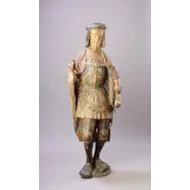
SOLD
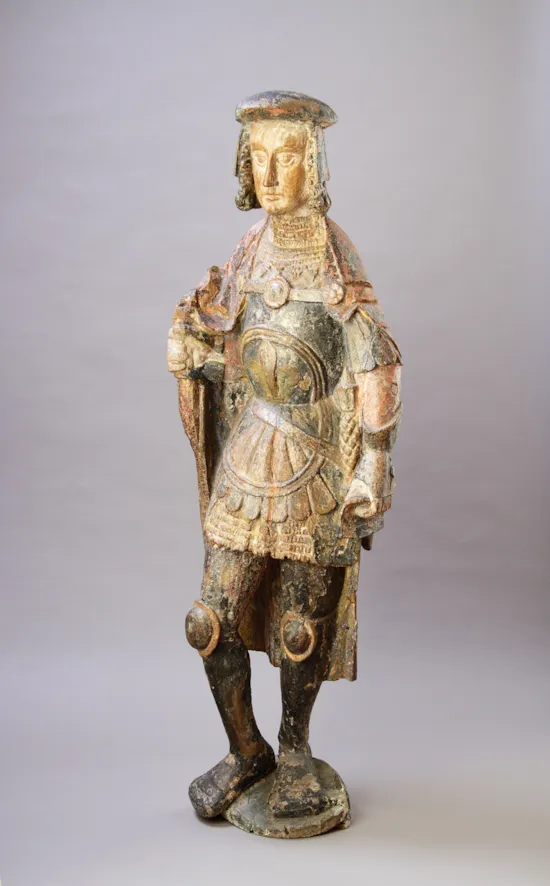
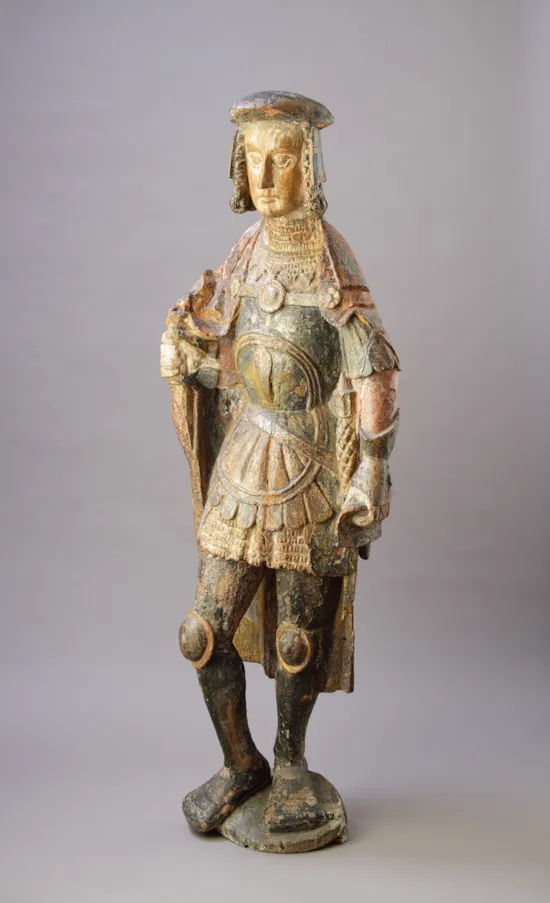
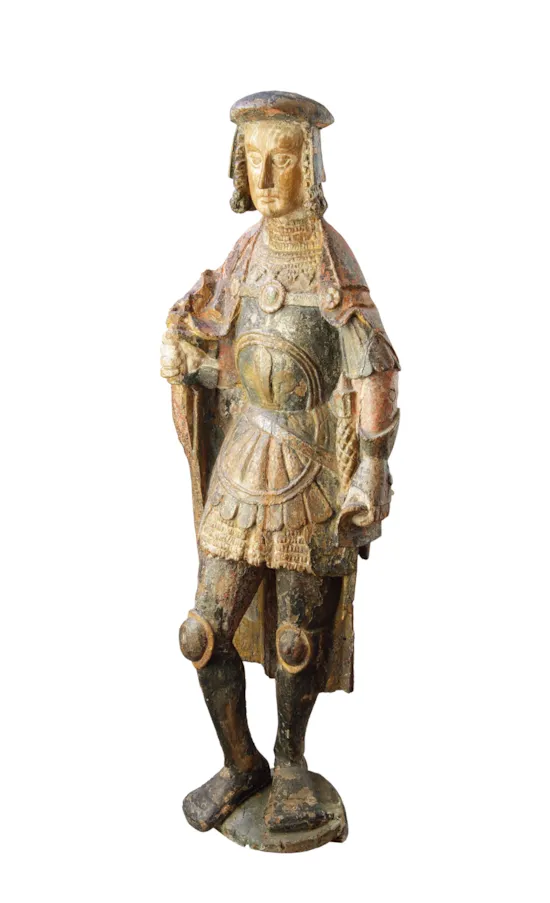
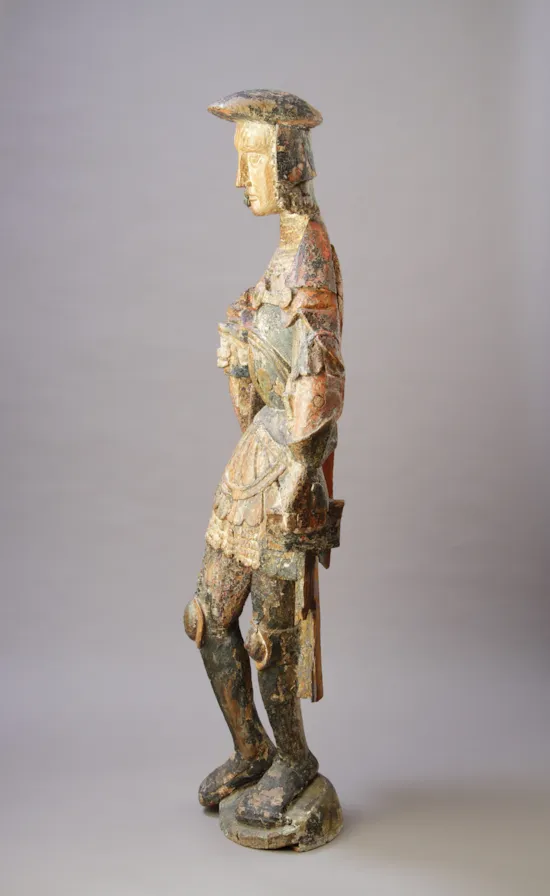
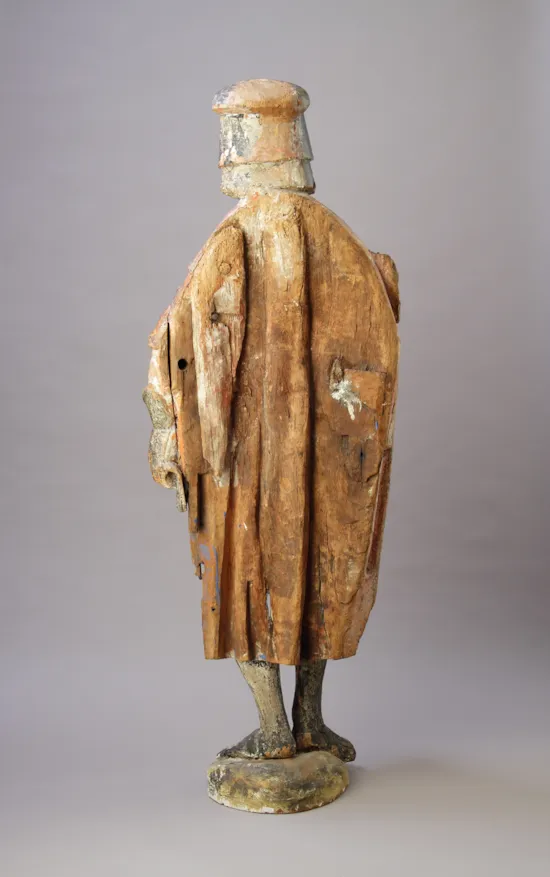
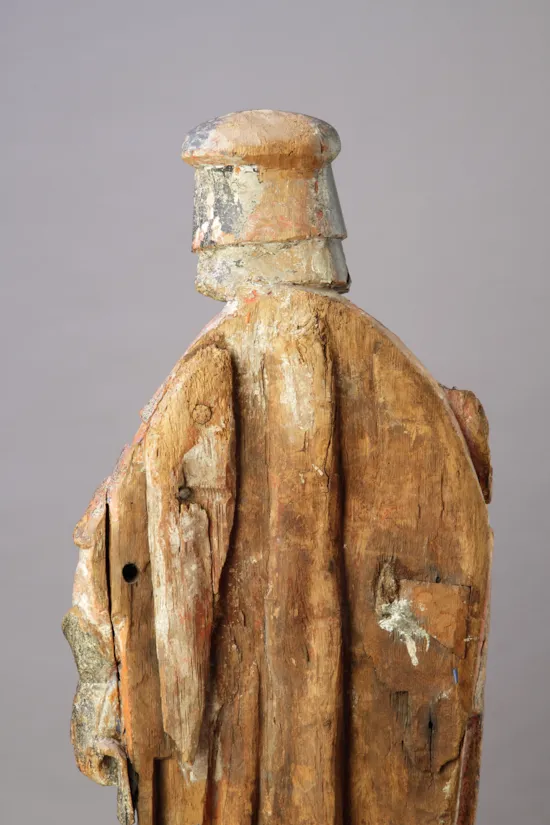

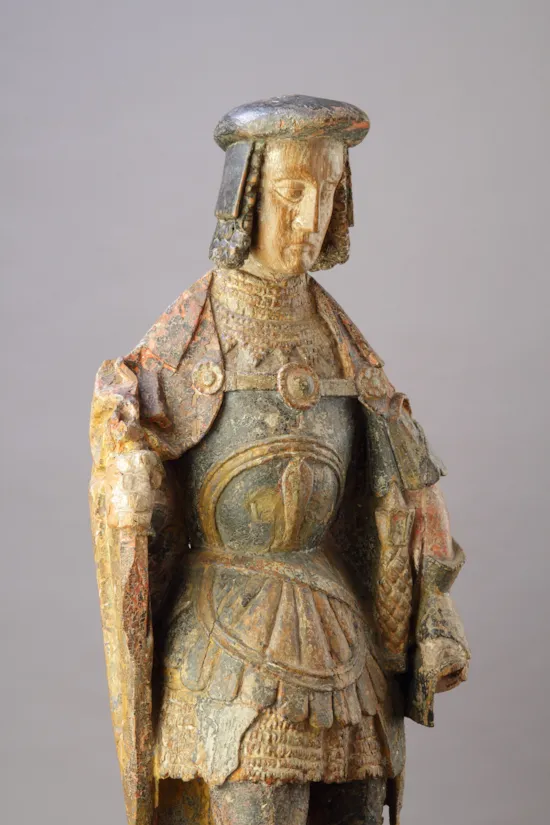
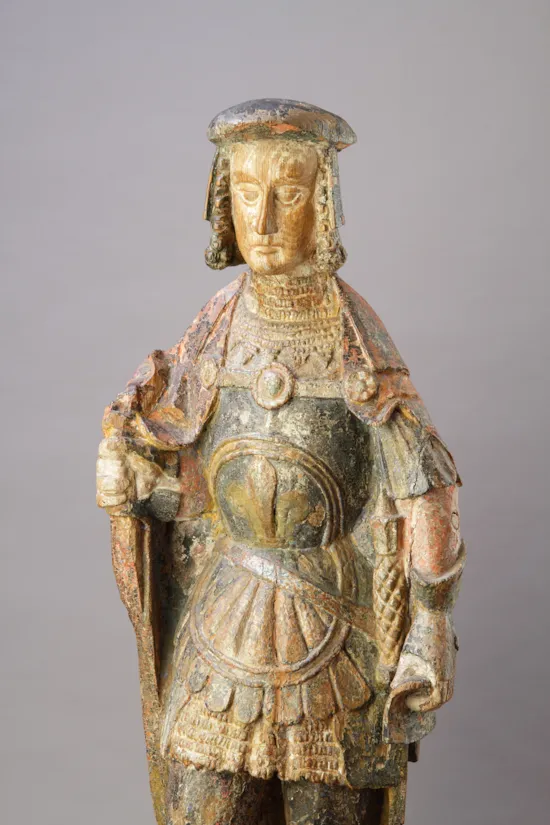
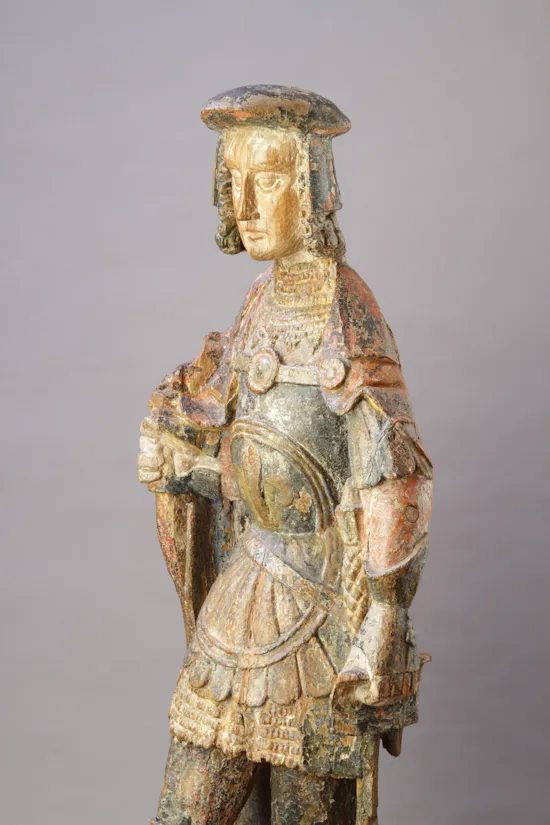










YOU MAY ALSO LIKE


